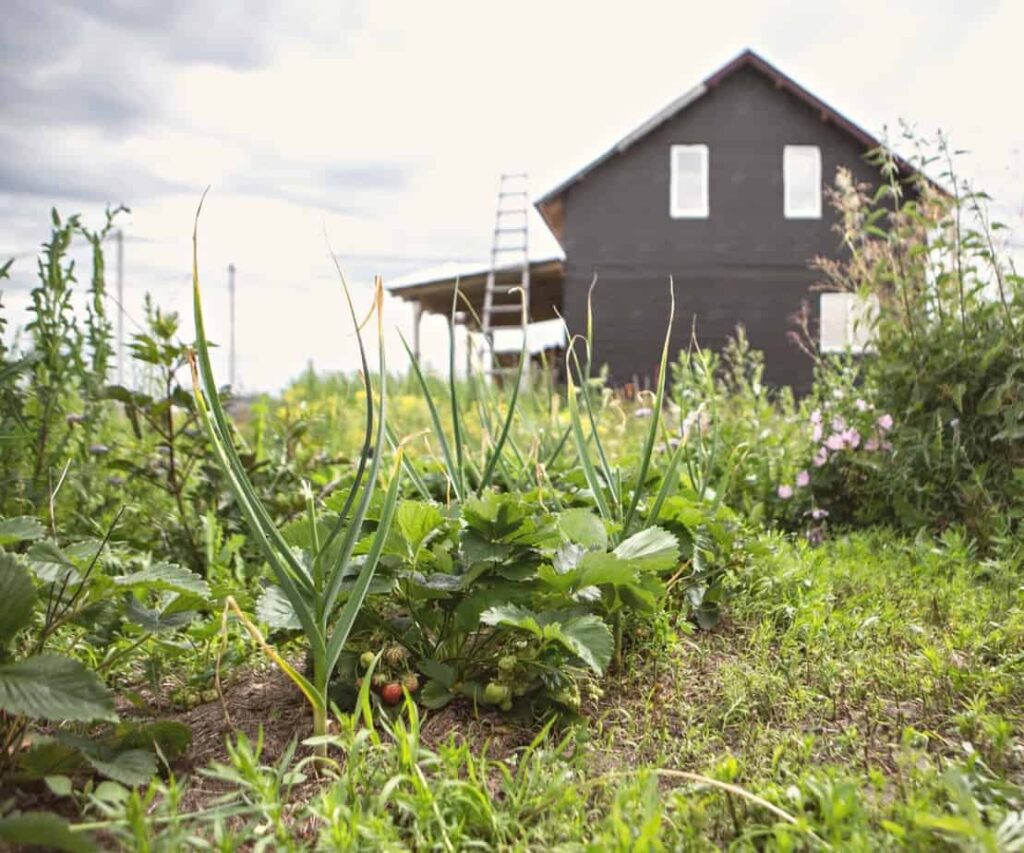The prices of essential goods have skyrocketed in recent years. Never before have groceries, cleaning supplies, and basic hygiene products cost so much, and everyone is feeling the pinch.
For some, this means cutting back and reducing their spending on extras, like eating out and entertainment. Others are taking a more drastic approach and reducing their reliance on consumer goods by homesteading.
Homesteading is a sustainable way of living based on self-sufficiency. People who homestead often live on small farms or farmettes and produce most of their own food and other household products.
Living this way isn’t just better for people’s health and better for the environment, but it’s also much easier on the wallet. People who homestead buy far fewer groceries and other consumer goods, so they aren’t as affected by inflation. In addition, homesteaders don’t have to worry about the price of eggs because they have chickens in their backyards laying them daily!
Are you interested in saving some money by becoming a homesteader? Anyone can with these seven frugal homesteading tips and tricks.
Get chickens
Chickens are an ideal animal for a homestead because they continuously provide food. They produce eggs daily and can be butchered for meat when their egg-laying days are over. Many consider chickens a gateway livestock because they’re great to have before adding more animals, like goats, pigs, or cows.
But there’s more to this bird than meets the eye. Yes, they’re an excellent food source, but they also help with gardening. Chickens will eat the bugs from your plants while fertilizing the ground with their waste.
Some homesteaders opt to house them in a mobile chicken coop. This allows chickens to be moved every few days so they can act as pest managers and fertilizers all over the garden.
Grow fruits and vegetables
A homestead simply wouldn’t work without a garden. The goal of homesteading is to be as self-sufficient as possible, and growing produce at home is a huge part of that. Not to mention the financial benefits of growing your own food—a small garden can produce as much as $600 worth of fruits and vegetables yearly.
But before you plant your garden, you need to plan. Pick a flat, well-drained part of your property that gets at least 8 hours of sunlight daily. You can plant directly into the ground or use raised garden beds, which will help protect your plants from rabbits and other ground-level pests. Prepare your soil with fresh compost and fertilizer. If your ground is rocky or sandy, you’ll also want to incorporate screened topsoil into the mix; fruits and vegetables need high-quality soil to thrive.
Choose your plants by checking the USDA’s hardiness zone map. This will tell you what grows well in your climate. You’ll also want to check the Farmer’s Almanac growing calendar to know exactly when you should put your plants in the ground. Select a diverse group of crops that mature at different times throughout the growing season to have fresh produce from spring through fall.
Learn how to preserve
Enjoying home-grown fruits and vegetables is one of the best parts of homesteading, but what happens in the winter when nothing grows? Preserving your excess harvest by canning and pickling is the solution.
Food preservation sustains homesteaders through the winter months. It allows you to enjoy what you’ve grown all year and helps keep the grocery bills down when you don’t have as much coming out of the garden.

Make your own food
Every homesteader knows their way around a garden, but what about other types of food like bread, yogurt, and condiments? Where do they get those? These products aren’t immune to inflation and can be expensive at the grocery store. The homesteader’s solution? Make these prepared foods at home!
Believe it or not, you can easily make many prepared foods from scratch. Homesteaders make everything from pasta sauce and pesto to hummus and cheese. Of course, making these items yourself takes time and know-how, but with patience and practice, you can inexpensively whip up plenty of foods you once had to buy at a grocery store.
Eating scratch-made foods is healthier, better for the environment, and much more affordable. It’s no secret that food prices have reached an all-time high, increasing by 11.4% between 2021 and 2022. The more food you make at home, the less you’ll be affected by these inflated prices.
Formulate hygiene and cleaning products
Food prices aren’t the only thing on the rise. Both hygiene and cleaning products cost more now than ever before. However, homesteaders can save money by creating their own versions of the personal and cleaning products they love.
But making hygiene and cleaning products doesn’t just save money; it could also save you! Many store-bought products contain carcinogenic chemicals, endocrine disruptors, preservatives, and fragrances. Creating your own from raw ingredients you already have is much better for you and your wallet.
Use fewer disposable products
Have you ever considered how much you spend on items destined for the trash? Things like paper towels and napkins, paper plates, plastic cups, cutlery, sandwiches, and storage baggies are all convenience items that will eventually be thrown away.
Stocking your home with items like these comes at a considerable cost financially and to the environment. However, learning to live without them can save a lot of money and significantly reduce your carbon footprint.
Instead of using paper towels, invest in more dish and tea towels. Avoid using paper plates by ensuring you have plenty of dishwashable china on hand. And you can easily swap out the baggies and plastic wrap for reusable silicone bags and wax-coated muslin. These simple switches will help you save money for years to come.
Switch to renewable energy
Renewable energy has always been popular among homesteaders, although recently, it’s gained more mass appeal. Adding solar panels or installing a geothermal HVAC system are investments that will save thousands long term, despite their up-front costs.
Another less popular renewable energy source comes from biogas, a fuel created by the human and animal waste produced on your homestead. Biogas is an excellent, affordable way to heat your home.
If you need more than these renewable energy solutions, you may also be able to switch your electric provider. Look for one that uses renewable energy like hydro, wind, or solar to power your home.
As prices continue to rise, more and more people will turn to the homesteading lifestyle. So start reaping the financial benefits by becoming more self-sufficient today!






